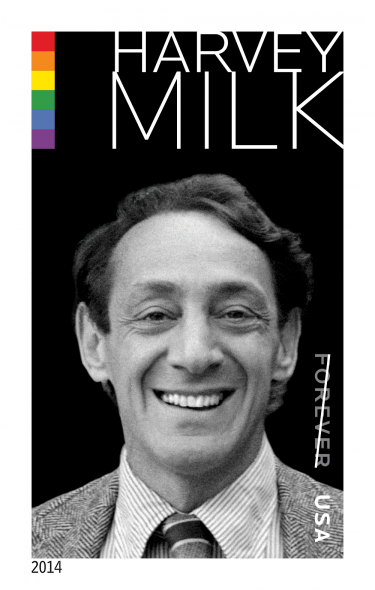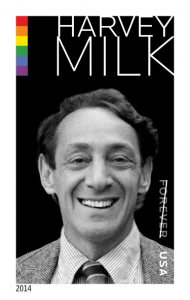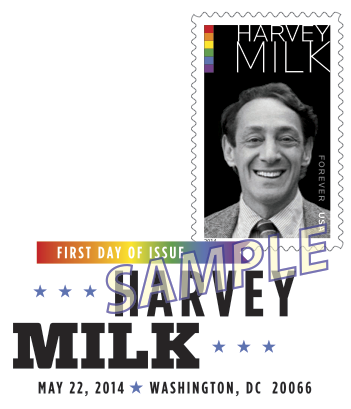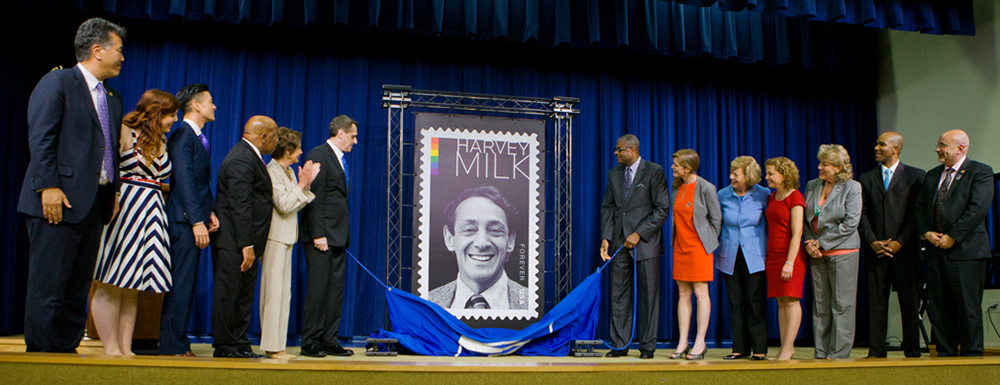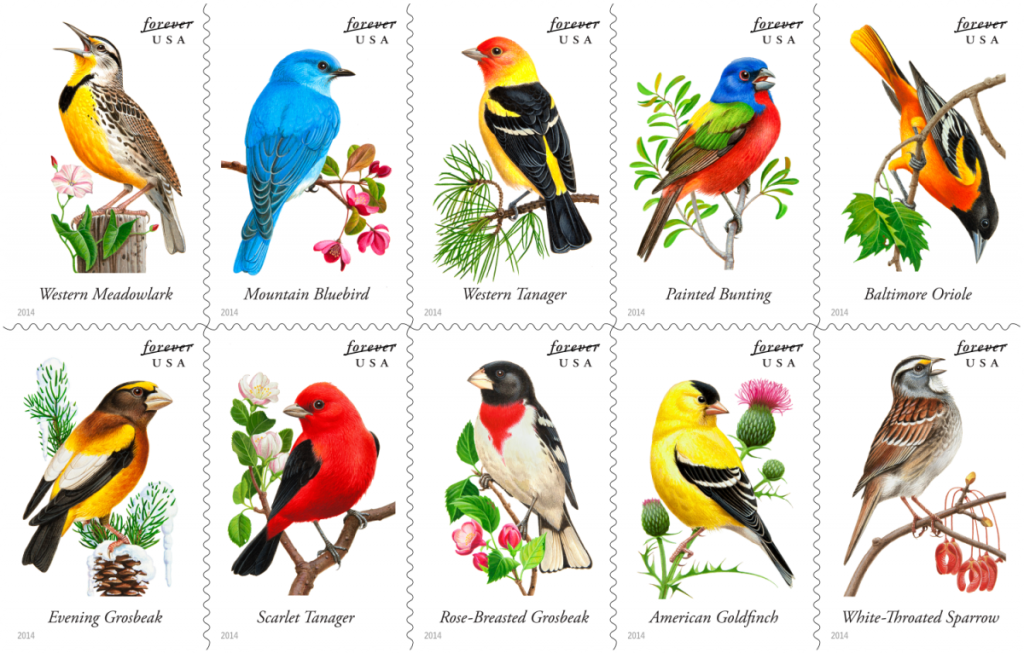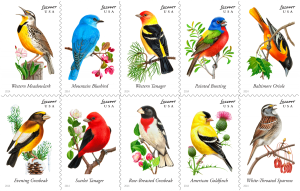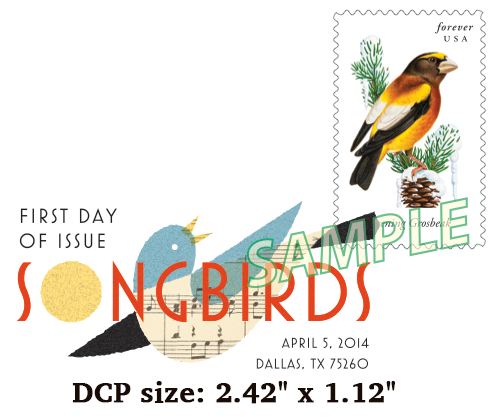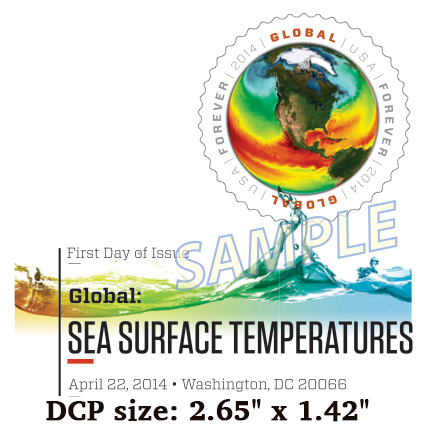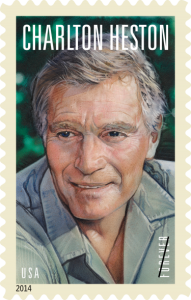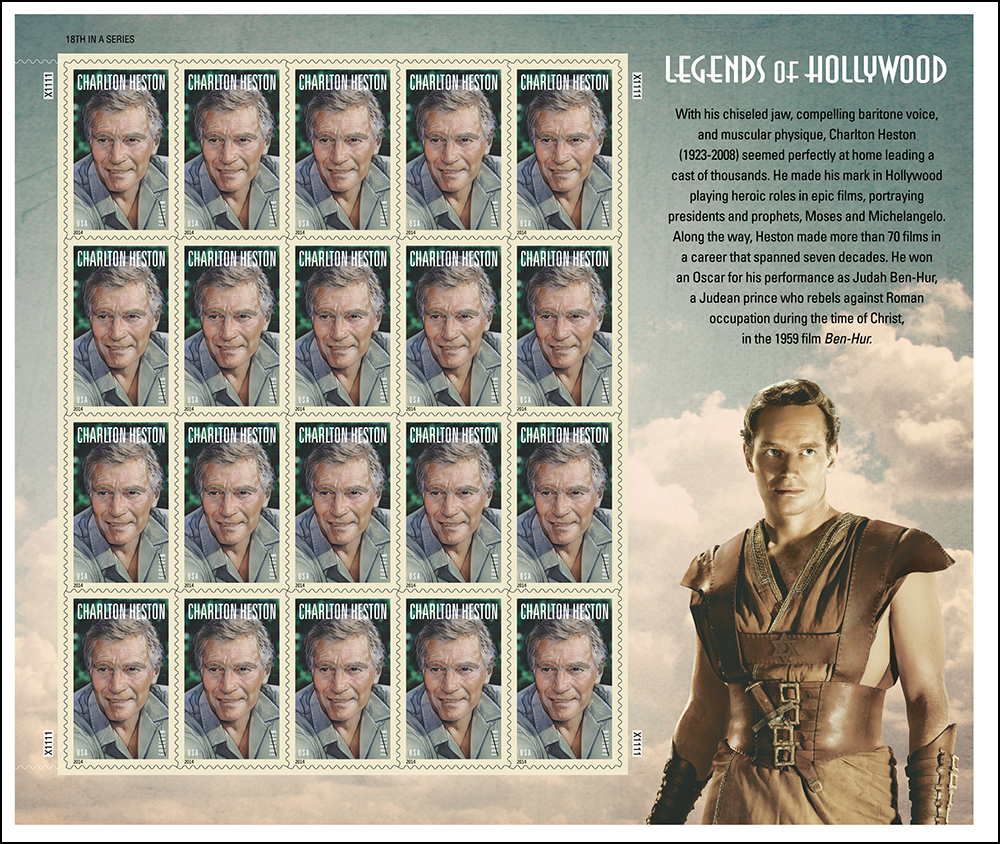 [The post-ceremony press release is at the bottom of this entry, along with better-quality images of the stamp designs. A photo essay on the first day ceremony in Petersburg, Virginia, can be found here.]
[The post-ceremony press release is at the bottom of this entry, along with better-quality images of the stamp designs. A photo essay on the first day ceremony in Petersburg, Virginia, can be found here.]
The December 12th USPS Postal Bulletin indicates that this issue will be released sometime in June, at Petersburg, Va.
From my article from the October press preview:
There will be another souvenir sheet in the Civil War series, this one commemorating the 1864 battles of Petersburg and Mobile Bay. The two stamps will be issued on the anniversary of the Petersburg battle, possibly June 15-18, in Petersburg, Va., but McGowan wouldn’t rule out a same-day first day ceremony in Mobile, Alabama. The reverse of the sheet shows a cannon crew.
April 25th: There will be first day ceremonies in both Petersberg and Mobile on July 30th.
From the USPS June 12th:
The Civil War (1861-1865), the most wrenching chapter in American history, claimed the lives of more than 620,000 soldiers and brought vast changes to the country. The Postal Service™ continues its commemoration of the 150th anniversary of the war by issuing a souvenir sheet of two stamp designs for 2014.
One stamp depicts the 22nd United States Colored Troops engaged in the June 15-18, 1864, assault on Petersburg, Virginia, at the beginning of the Petersburg Campaign. The other stamp depicts Admiral David G. Farragut’s fleet at the Battle of Mobile Bay (Alabama) on August 5, 1864.
Art director Phil Jordan created the stamps using iconic images of the battles. The Petersburg Campaign stamp is a reproduction of a painting, dated 1892, by J. André Castaigne. The Battle of Mobile Bay stamp is a reproduction of a painting by Julian Oliver Davidson, published ca. 1886 by Louis Prang & Co.
For the background image on the souvenir sheet, Jordan used a photograph of Battery A, 2nd U.S. Colored Artillery (Light), Department of the Cumberland, 1864.
The souvenir sheet includes comments on the war by Ulysses S. Grant, Jeremiah Tate, Harrie Webster, and Howell Cobb. It also includes some of the lyrics from the Negro spiritual “O Mary, Don’t You Weep.”
The Petersburg Campaign and the Battle of Mobile Bay stamps are being issued as Forever® stamps. These Forever® stamps will always be equal in value to the current First-Class Mail® one-ounce rate.
Added June 25th: The first-day postmarks for this issue:
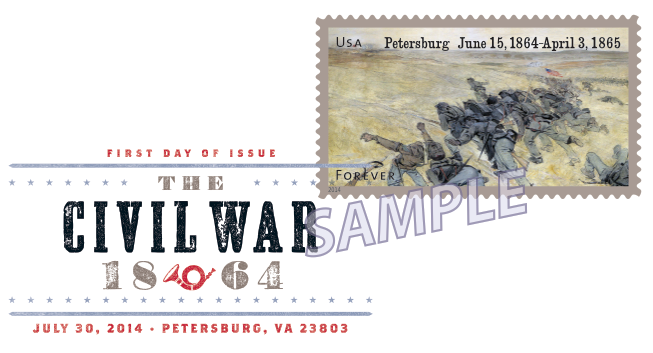
Both Digital Color Postmarks measures 2.43″ x 1.23″.
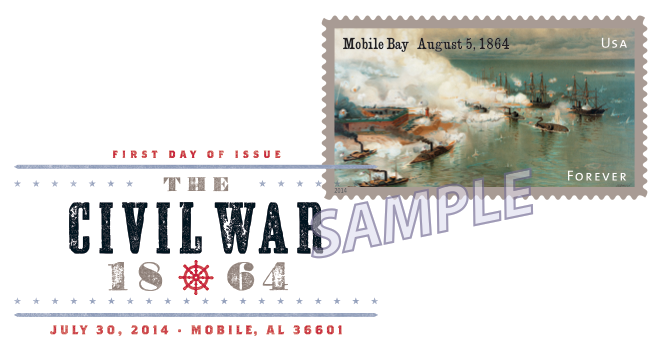
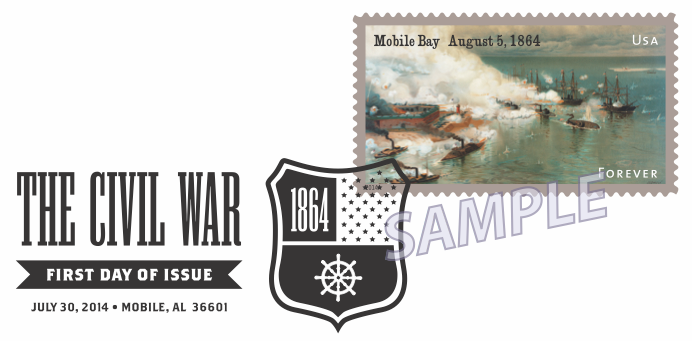 Both B&W postmarks measure 2.63″ x 1.17″.
Both B&W postmarks measure 2.63″ x 1.17″.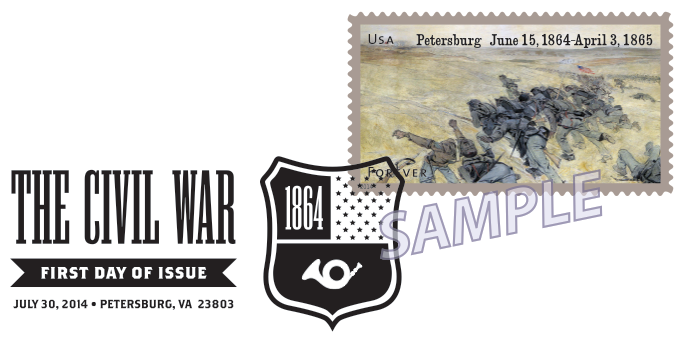
From the June 26th Postal Bulletin:
On July 30, 2014, in Petersburg, Virginia at the Petersburg National Battlefield, and in Mobile, Alabama at the History Museum of Mobile, the U.S. Postal Service® will issue a Civil War: 1864 (Forever® priced at 49 cents) commemorative se-tenant First–Class Mail stamp pair (two designs) in a pressure-sensitive adhesive (PSA) souvenir sheet of 12 stamps (Item 587300). The $5.88 Civil War: 1864 souvenir sheet may not be split, and the stamps may not be sold individually.
The stamps will go on sale nationwide July 30, 2014.
In 2014, the U.S. Postal Service continues its five-year commemoration of the 150th anniversary of the Civil War with this souvenir sheet, which includes two stamps. One depicts the 22nd United States Colored Troops engaged in the June 15-18, 1864, assault on Petersburg, Virginia, at the beginning of the Petersburg Campaign. The stamp is a reproduction of a painting, dated 1892, by J. André Castaigne (painting courtesy of the West Point Museum, United States Military Academy, West Point, New York). The other stamp depicts Admiral David G. Farragut’s fleet at the Battle of Mobile Bay (Alabama) on August 5, 1864. The background image on the pane is a photograph of Battery A, 2nd U.S. Colored Artillery (Light), Department of the Cumberland, 1864 (photograph courtesy of the Chicago History Museum, ICHi-07774). The souvenir sheet also includes period quotes and lyrics from a Negro spiritual. The Civil War Sesquicentennial series was designed by art director Phil Jordan.
How to Order the First-Day-of-Issue Postmark:
Customers have 60 days to obtain the first-day-of-issue postmark by mail. They may purchase new stamps at their local Post Office, at The Postal Store® website at www.usps.com/shop, or by calling 800-STAMP-24. They should affix the stamps to envelopes of their choice, address the envelopes (to themselves or others), and place them in a larger envelope addressed to:
Civil War: 1864 (Mobile, AL)
Supervisor Customer Service Support
250 Saint Joseph Street
Mobile, AL 36601-9998
Civil War: 1864 (Petersburg, VA)
Retail Manager – Richmond District
1801 Brook Road
Richmond, VA 23232-9640
After applying the first-day-of-issue postmark, the Postal Service will return the envelopes through the mail. There is no charge for the postmark up to a quantity of 50. For more than 50, customers have to pay five cents each. All orders must be postmarked by September 28, 2014.
There are eleven philatelic products for this stamp issue:
- 587306 Press Sheet w/Die cuts, $35.28 (print quantity 1,500).
- 587308 Press Sheet w/o Die cuts, $35.28 (print quantity 2,500).
- 587310 Keepsake w/Digital Color Postmark (Set of 2), $9.95.
- 587316 First-Day Cover (Set of 2), $1.86.
- 587319 First-Day Cancelled Full Sheet, $8.38.
- 587321 Digital Color Postmark (Set of 2), $3.28.
- 587324 Framed Art, $39.95.
- 587327 Folio, $16.95.
- 587330 Ceremony Program (2 stamps, 2 cancels), $6.95.
- 587331 Stamped Deck Card, $0.95.
- 587332 Stamped Deck Card w/Digital Color
- Postmark (2 stamps, 2 cancels), $2.98.
 Technical Specifications:
Technical Specifications:
Issue: Civil War: 1864 Stamps
Item Number: 587300
Denomination & Type of Issue: First-Class Mail Forever
Format: Pane of 12 (2 designs)
Series: Civil War Sesquicentennial
Issue Date & City: July 30, 2014, Petersburg, VA 23803 (Petersburg National Battlefield) and Mobile, AL 36601 (History Museum of Mobile)
Designer: Phil Jordan, Falls Church, VA
Art Director: Phil Jordan, Falls Church, VA
Typographer: Phil Jordan, Falls Church, VA
Engraver: N/A
Modeler: Donald Woo
Manufacturing Process: Offset
Printer: Banknote Corporation of America/SSP
Printed at: Browns Summit, NC
Press Type: Alprinta 74
Stamps per Pane: 12
Print Quantity: 10,800,000 stamps
Paper Type: Phosphor Tagged Paper, Block Tag
Adhesive Type: Pressure-sensitive adhesive
Processed at: Banknote Corporation of America, Browns Summit, SC
Colors: Cyan, Magenta, Yellow, Black, Warm Grey 6
Stamp Orientation: Horizontal
Image Area (w x h): 2.0 x 1.06 in./50.81 x 26.87 mm
Overall Size (w x h): 2.10 x 1.20 in./53.45 x 30.42 mm
Full Pane Size (w x h): 8.88 x 6.75 in./225.55 x 171.45 mm
Press Sheets Size (w x h): 17.89 x 20.5 in./ 454.28 x 520.70 mm
Plate Size: 72 stamps per revolution
Plate Numbers: N/A
Marginal Markings:
Back: Civil War 1864 Bio© • Plate Grid
• UPC Code • USPS Logo
• Copyright date 2013 USPS
July 8th: Ceremony Details:
The History Museum of Mobile
111 South Royal Street
Mobile, AL 36602
10 a.m. July 30
Petersburg National Battlefield (next to the Crater)
5001 Siege Road
Petersburg, VA 23803
10 a.m. (suggest wearing sunscreen and a hat. It’s going to be hot!) July 30
Also, there’s going to be a postcard mailing to residents in the area via Every Door Direct Mail product.
Post-ceremony press release:
Battles of Mobile Bay, Petersburg Memorialized on Civil War Forever Stamps
Fourth of Five-Year Civil War Sesquicentennial Stamps Series Continues
 MOBILE, AL — Two of the most important events of the Civil War — the Battle of Mobile Bay (AL) and the siege at Petersburg, VA — were memorialized on Forever stamps July 30, 2014, at the sites where these conflicts took place. [VSC’s photo essay on the Petersburg ceremony can be found here.]
MOBILE, AL — Two of the most important events of the Civil War — the Battle of Mobile Bay (AL) and the siege at Petersburg, VA — were memorialized on Forever stamps July 30, 2014, at the sites where these conflicts took place. [VSC’s photo essay on the Petersburg ceremony can be found here.]
One stamp depicts Admiral David G. Farragut’s fleet at the Battle of Mobile Bay (AL) on Aug. 5, 1864. The other stamp depicts the 22nd U.S. Colored Troops engaged in the June 15-18, 1864, assault on Petersburg, VA, at the beginning of the Petersburg Campaign.
“The Civil War was one of the most intense chapters in our history, claiming the lives of more than 620,000 people,” said Postmaster General Patrick Donahoe in dedicating the Mobile Bay stamp. “Today, through events and programs held around the country, we’re helping citizens consider how their lives — and their own American experience — have been shaped by this period of history.”
In Petersburg, Chief U.S. Postal Service Inspector Guy Cottrell dedicated the stamps just yards from the location of an underground explosion — that took place150 years ago today — which created a huge depression in the earth and led to the battle being named “Battle of the Crater.” Confederates — enraged by the sight of black soldiers — killed many soldiers trapped in the crater attempting to surrender.
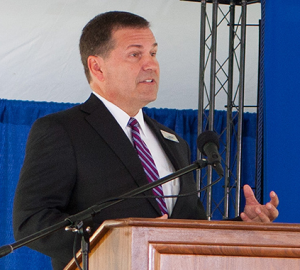 “The soldiers shown on the Petersburg stamp were part of the 175 regiments — more than 178,000 African-American men — who made up the United States Colored Troops,” Cottrell explained. “They were free blacks from the north as well as escaped and freed slaves from the south. These brave men placed their lives on the line to prove they were fit to be citizens. Beyond fighting to preserve the nation — they were fighting for their freedom and freedom of their families.”
“The soldiers shown on the Petersburg stamp were part of the 175 regiments — more than 178,000 African-American men — who made up the United States Colored Troops,” Cottrell explained. “They were free blacks from the north as well as escaped and freed slaves from the south. These brave men placed their lives on the line to prove they were fit to be citizens. Beyond fighting to preserve the nation — they were fighting for their freedom and freedom of their families.”
Customers may purchase the Civil War Sesquicentennial 1864 collectible Forever Souvenir Stamp sheet at usps.com/stamps, at 800-STAMP-24 (800-782-6724) and at Post Offices nationwide.
The Postal Service began the Civil War Sesquicentennial Forever stamp series in 2011 with the Fort Sumter and Battle of Bull Run Forever stamps. In 2012, stamps memorializing the Battles of Antietam and New Orleans were issued. The battles of Gettysburg and Vicksburg were recognized on Forever stamps last year.
Art director Phil Jordan of Falls Church, VA, selected historic paintings for the stamp designs. The Petersburg Campaign stamp is a reproduction of a painting, dated 1892, by J. André Castaigne (painting courtesy of the West Point Museum, U.S. Military Academy, West Point, NY). The Battle of Mobile Bay stamp is a reproduction of a painting by Julian Oliver Davidson, published circa 1886 by Louis Prang & Co.
For the background image on the souvenir sheet, Jordan used a photograph of Battery A, 2nd U.S. Colored Artillery (Light), Department of the Cumberland, 1864 (photograph courtesy of the Chicago History Museum).
The souvenir sheet includes comments on the war by Ulysses S. Grant, Jeremiah Tate, Harrie Webster and Howell Cobb. It also includes some of the lyrics from the Negro spiritual “O Mary, Don’t You Weep.”
The Petersburg Campaign, June 15 – July 4, 1863
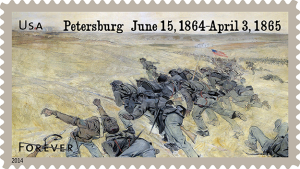 In the spring of 1864, Grant launched an offensive targeting Richmond, VA, the capital of the Confederacy.
In the spring of 1864, Grant launched an offensive targeting Richmond, VA, the capital of the Confederacy.
During the first month of the massive operation, the Union sustained losses to Robert E. Lee’s Army of Northern Virginia at the Battle of the Wilderness, west of Fredericksburg, and at Cold Harbor, just north of Richmond. Instead of retreating, Grant in early June moved his forces across the James River in an attempt to approach Richmond from the south through Petersburg.
Pierre G.T. Beauregard, the general in command of Petersburg’s defense, had fewer than 6,000 soldiers and local militia on June 15 when William F. Smith’s Eighteenth Corps, some 14,000 strong, stormed the city’s fortifications. Two brigades of African-American soldiers spearheaded the assault and were poised to enter the city.
Battle of the Crater and the role of U.S. Colored Troops
A long siege of 10 months ensued, despite a Union attempt on July 30 to blast through Confederate defenses at the Battle of the Crater. After digging a 500-foot tunnel under a Confederate strongpoint, a regiment of Pennsylvania coal miners in Gen. Ambrose E. Burnside’s Ninth Corps (Army of the Potomac) set off a massive explosion. Union soldiers charged into the resulting crater but became sitting ducks for Confederates as they tried to climb its steep sides. Grant called the battle “a stupendous failure.”
As in the initial June assault, black troops participated in the fighting at the Battle of the Crater. However, by the time the all-black Fourth Division of the Ninth Corps entered the battle, the crater was clogged with Federal troops and their offensive was stalling. As Confederates counterattacked, according to witnesses, they became enraged at the sight of black soldiers and killed many who were essentially trapped in the crater and attempting to surrender. The Fourth Division lost more than 1,000 men, nearly 40 percent of the Ninth Corps’ losses that day.
After the Union defeat at the Battle of the Crater, both sides settled into trench warfare that lasted another eight months. The battle caused a decline in Northern morale and nearly prevented Lincoln from winning a second term as president. The Petersburg Campaign ultimately led to Richmond and to the South’s surrender at Appomattox.
Battle of Mobile Bay Aug, 5, 1864
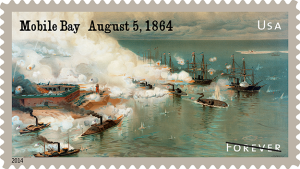 Beyond Virginia, Grant set his sights on Mobile, coordinating an attack with Gen. William T. Sherman’s advance further south toward Atlanta. Adm. David G. Farragut, hero of the U.S. Navy’s conquest of New Orleans in 1862, headed the operations against Mobile. To reach the city, his fleet had to face fire from two forts guarding Mobile Bay — and navigate around mines (then called torpedoes) laid at the entrance.
Beyond Virginia, Grant set his sights on Mobile, coordinating an attack with Gen. William T. Sherman’s advance further south toward Atlanta. Adm. David G. Farragut, hero of the U.S. Navy’s conquest of New Orleans in 1862, headed the operations against Mobile. To reach the city, his fleet had to face fire from two forts guarding Mobile Bay — and navigate around mines (then called torpedoes) laid at the entrance.
‘Damn the Torpedos! Full speed ahead!’
On Aug. 5, the lead ironclad USS Tecumseh hit a torpedo and sank, losing 94 men. Farragut climbed the rigging of his flagship USS Hartford. From this high perch, he is said to have given the famous order “Damn the Torpedoes! Full speed ahead.”
Farragut and his flagship USS Hartford guided the rest of the fleet through the minefield, and when Fort Morgan surrendered Aug. 23, the Confederacy lost the use of the crucial port of Mobile for the rest of the war.
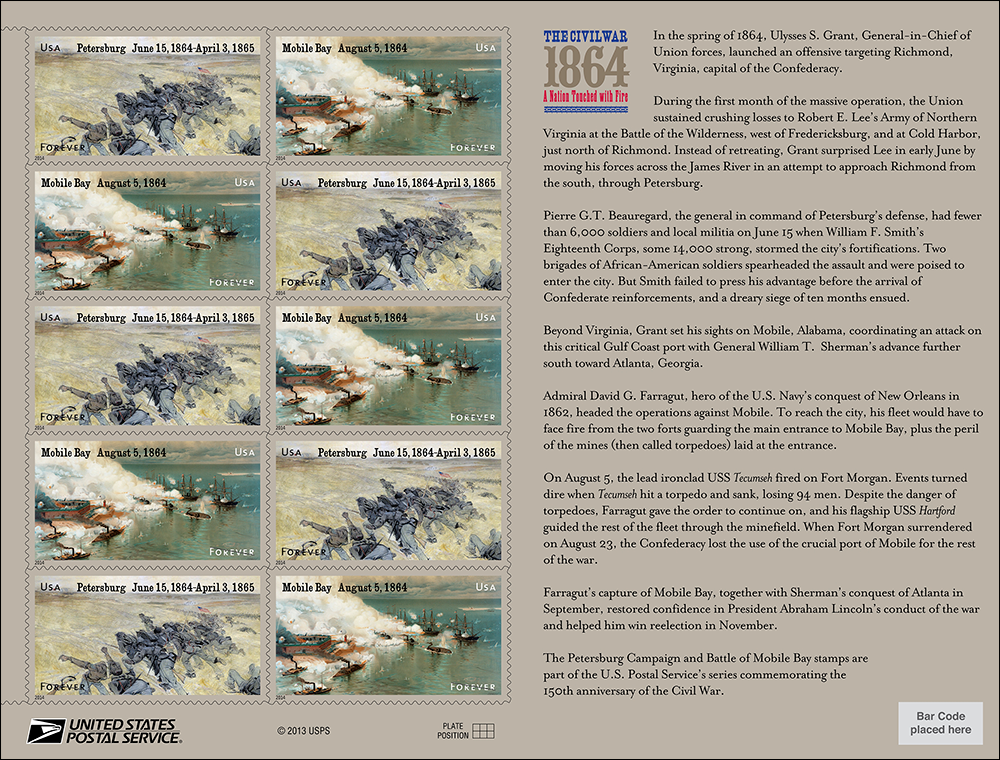
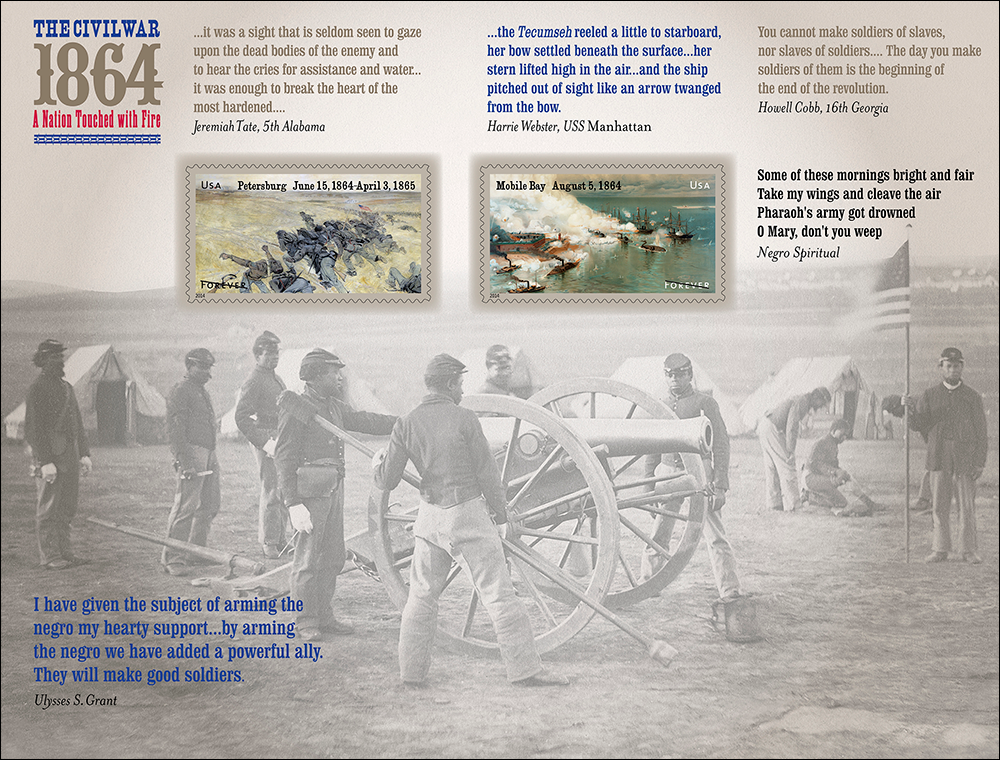
 A daily trek to the post office is an established part of my routine. As often as not, I have to stand in line to mail a Priority Mail package, pick up packages or controlled mail, and/or weigh something to determine postage. Yes, I usually have something I can read while I wait, but sometimes I daydream. Over the course of a week, I wrote down those random thoughts:
A daily trek to the post office is an established part of my routine. As often as not, I have to stand in line to mail a Priority Mail package, pick up packages or controlled mail, and/or weigh something to determine postage. Yes, I usually have something I can read while I wait, but sometimes I daydream. Over the course of a week, I wrote down those random thoughts:












